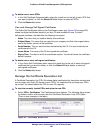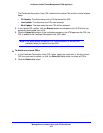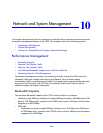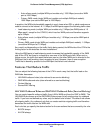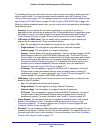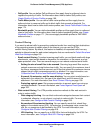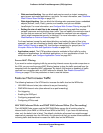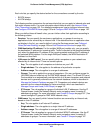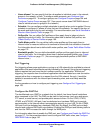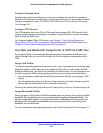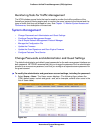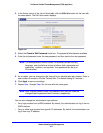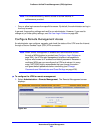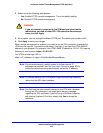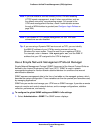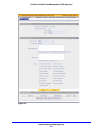
Network and System Management
434
ProSecure Unified Threat Management (UTM) Appliance
• Users allowed. You can specify that the rule applies to individual users in the network,
groups in the network, or both. To configure users accounts, see Configure User
Accounts on page 401. To configure groups, see Configure Groups on page 394 and
Configure Custom Groups on page 397. (You cannot narrow down DMZ WAN inbound
rules to individual users or groups in the network.)
• Schedule. You can configure multiple schedules to specify when a rule is applied. Once a
schedule is configured, it affects all rules that use this schedule. You specify the days of
the week and time of day for each schedule. For more information, see Set a Schedule to
Block or Allow Specific Traffic on page 177.
• QoS profile. You can define QoS profiles and then apply them to inbound rules to
regulate the priority of traffic. For information about how to define QoS profiles, see
Create Quality of Service Profiles on page 169.
• Traffic Meter profile. You can define traffic meter profiles and then apply them to
inbound rules to measure traffic and to continue to allow traffic that exceeds a threshold.
For information about how to define traffic meter profiles, see Create Traffic Meter Profiles
on page 174.
• Bandwidth profile. You can define bandwidth profiles and then apply them to inbound
rules to limit traffic. For information about how to define bandwidth profiles, see Create
Bandwidth Profiles on page 171. (You cannot apply bandwidth profiles to DMZ WAN
inbound rules.)
Port Triggering
Port triggering allows some applications running on a LAN network to be available to external
applications that would otherwise be partially blocked by the firewall. Using the port-triggering
feature requires that you know the port numbers used by the application. Without port
triggering, the response from the external application would be treated as a new connection
request rather than a response to a request from the LAN network. As such, it would be
handled in accordance with the inbound port-forwarding rules, and most likely would be
blocked.
For the procedure on how to configure port triggering, see Configure Port Triggering on
page 183.
Configure the DMZ Port
The demilitarized zone (DMZ) is a network that, by default, has fewer firewall restrictions
when compared to the LAN. The DMZ can be used to host servers (such as a web server,
FTP server, or email server) and provide public access to them. On the UTM5, UTM10,
UTM25, and UTM150, LAN port 4 can be dedicated as a hardware DMZ port to provide
services safely to the Internet without compromising security on your LAN. On the UTM50,
LAN port 6 can be dedicated as a hardware DMZ port. By default, the DMZ port and both
inbound and outbound DMZ traffic are disabled. Enabling the DMZ port and allowing traffic to
and from the DMZ increases the traffic through the WAN ports.
For information about how to enable the DMZ port, see Configure and Enable the DMZ Port
on page 117. For the procedures about how to configure DMZ traffic rules, see Configure
DMZ WAN Rules on page 142.



